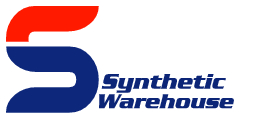SEPTEMBER 2015
Most people aren’t drawn to chemistry, and the majority of people would rather do many other things before sitting down to have a really engaging discussion around polymer science. My wife is a perfect example. Sometimes, when I get home from work, I share a little bit of my day and talk about an exciting new technology with her. She listens pretty well, but the last time I talked with her about some
intriguing dispersant research, she said that she would rather be at the dentist’s office. Honestly, I never would have guessed that a dentist would know more about lubrication science than a lubrication guy!
While I find chemistry fascinating, I admit I’m in the minority. That’s why many oil companies coin catchy terminology to describe the chemistry of their motor oils. You’ve no doubt seen the ads on TV or encountered labels at the auto parts store that tout “Liquid Titanium*” protection or “Titanium Fluid Strength Technology.*” One oil company informs consumers its motor oil contains “Synerlec*,” which
is its proprietary additive technology. Then there’s “Magnatec*” and its “intelligent molecules.” We could go on.
To some, this terminology evokes technological advancement and exclusivity. It attempts to strike an
emotional chord and helps convince motorists they’re providing their vehicles a special level of protection
unavailable elsewhere.
What excites us at AMSOIL is designing, formulating and testing unique chemistries that provide
the best engine protection and performance possible in motor oil. We don’t use catchy slogans to identify
the design, additives, formulations or testing behind our products. We instead build on the AMSOIL brand and try to earn our stripes every day through hard work, smart decisions and an unwavering commitment to quality. No bells, no whistles – just outstanding performance that helps motorists get the most out of their vehicles and equipment.
At the risk of sending some of you to the dentist’s office, I’d like to explain how specific motor oil properties affect your vehicles and equipment.
Motor oils are comprised of many different components, but in two fundamental categories: base oils and additives. Using synthetic base oils is a good start, but without the right additives in the correct combinations, synthetic base oils alone cannot fulfill the requirements of an engine.
Motor oils are comprised of many different components, but in two fundamental categories: base oils and additives. Using synthetic base oils is a good start, but without the right additives in the correct combinations, synthetic base oils alone cannot fulfill the requirements of an engine.
Additives generally enhance the base oil’s beneficial properties by, for example, resisting oxidation, corrosion or foam. They impart new properties by providing benefits like extreme-pressure wear protection and added detergency for improved cleanliness. And they reduce the base oil’s negative
properties by, for example, lowering the pour point or increasing the viscosity index.
Viscosity index improvers (VII) are a good example. They paved the way for the multigrade oils common today, allowing, for example, a 5W-30 oil to deliver the fluidity of an SAE 5W oil when cold and the stability of an SAE 30 oil when at operating temperature, providing the best of both worlds.
Other common additives include the following:
Oxidation inhibitors – improve oil service life, reduce viscosity increase and formation of deposits and sludge
Detergents – minimize deposit formation in high-temperature areas of an engine
Dispersants – help suspend solid contaminants within the lubricant to prevent sludge, varnish and other deposits
Corrosion inhibitors – form a protective film on metal surfaces, protecting them against chemical attack
Anti-wear – provide a sacrificial wear surface to prevent metal-to-metal contact
Friction modifiers – improve lubricity and maximize fuel economy
Anti-foaming agents – reduce surface tension of air bubbles, resulting in more rapid breakdown of bubbles
Today, additives make up as much as 30 percent of a motor oil’s formulation. Modern additive systems can be sensitive to specific materials and negatively affected by the addition of other chemicals. Therefore, AMSOIL doesn’t recommended mixing lubricants. You should also avoid using aftermarket additives that promise improved wear protection, fuel economy or other benefits. They’re unnecessary
in AMSOIL synthetic motor oils and can disrupt their precisely balanced formulations.
Don’t expect AMSOIL to market Amalec, Synerzoil or Tungsten-Enfused Oil anytime soon. Do expect to see more proof of superior performance and value in AMSOIL synthetic motor oils.



